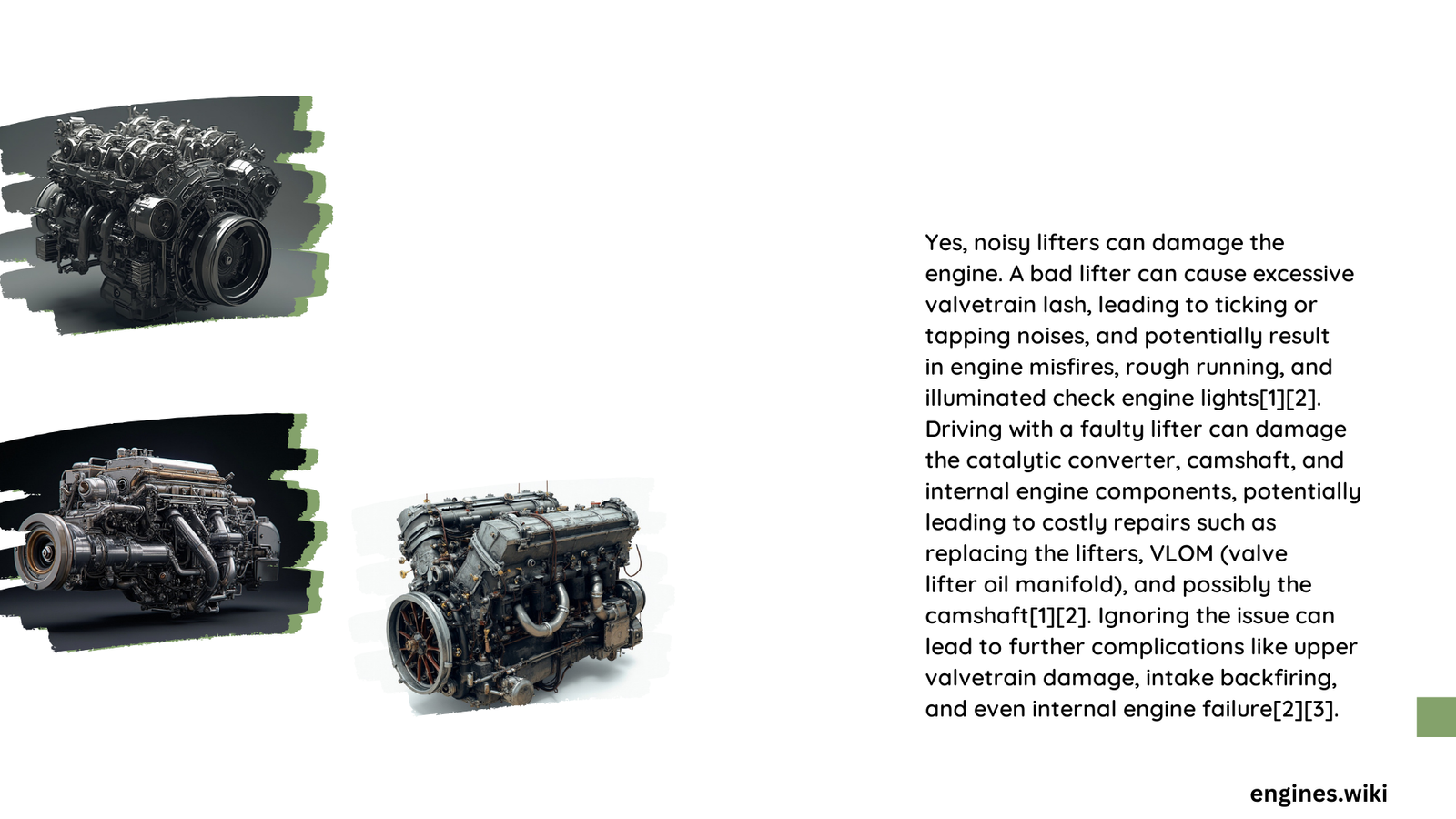Noisy lifters are more than just an annoying sound—they represent a potential threat to your engine’s structural integrity and performance. When left unaddressed, these seemingly minor mechanical disturbances can escalate into catastrophic engine failures, causing extensive damage to critical components like camshafts, valves, and internal lubrication systems. Understanding the mechanisms, consequences, and preventive strategies is crucial for maintaining your vehicle’s long-term health and avoiding expensive repairs.
What Causes Lifter Noise in Engines?
Lifter noise typically emerges from several fundamental mechanical issues:
- Hydraulic Lifter Wear
- Degraded internal components
- Insufficient oil pressure
-
Contaminated hydraulic fluid
-
Mechanical Lifter Problems
- Improper valve train alignment
- Excessive clearance between components
- Material fatigue and structural breakdown
Will Noisy Lifters Actually Damage My Engine?

Potential Mechanical Consequences
| Damage Type | Severity | Potential Outcome |
|---|---|---|
| Minor Wear | Low | Reduced Performance |
| Component Misalignment | Medium | Valve Train Disruption |
| Structural Failure | High | Complete Engine Replacement |
Critical Damage Mechanisms
Noisy lifters can trigger multiple destructive processes:
- Debris Generation: Collapsed lifters release metal fragments
- Lubrication Disruption: Compromised oil flow increases friction
- Valve Train Stress: Uneven mechanical interactions cause accelerated wear
How Quickly Can Lifter Noise Lead to Engine Damage?
The progression of damage depends on multiple factors:
- Immediate Risks:
- Initial performance reduction
- Increased mechanical stress
-
Potential rapid component degradation
-
Long-Term Consequences:
- Cumulative wear on engine components
- Potential catastrophic failure
- Exponential repair cost escalation
What Diagnostic Steps Should You Take?
Professional Evaluation Recommendations
- Immediate Inspection
- Verify noise source
- Assess lifter condition
-
Determine potential damage extent
-
Comprehensive Diagnostic Approach
- Oil system analysis
- Valve train assessment
- Compression testing
Prevention and Maintenance Strategies
Proactive Engine Care
- Regular Oil Changes
- Use manufacturer-recommended viscosity
- Implement synthetic oil solutions
-
Maintain consistent service intervals
-
Professional Monitoring
- Annual comprehensive engine evaluation
- Early detection of potential issues
- Preventive component replacement
Cost Considerations
Potential Repair Expenses
- Minor Repair: $500 – $1,500
- Moderate Intervention: $1,500 – $3,500
- Complete Engine Replacement: $4,000 – $8,000
Conclusion
Noisy lifters should never be ignored. While not every instance guarantees immediate engine destruction, consistent mechanical disturbances represent significant risk factors that can lead to substantial damage and expensive repairs.
